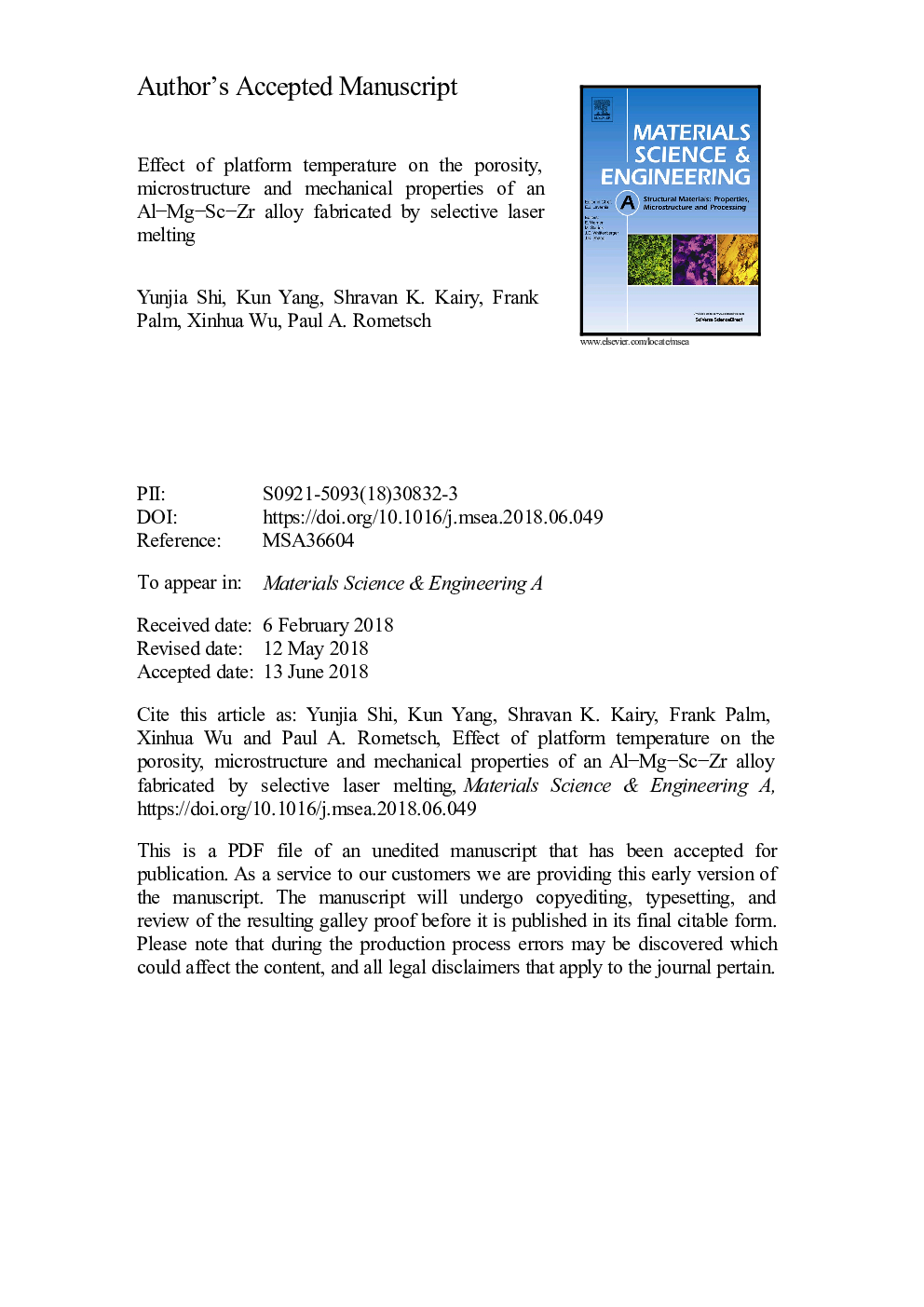| Article ID | Journal | Published Year | Pages | File Type |
|---|---|---|---|---|
| 7971595 | Materials Science and Engineering: A | 2018 | 28 Pages |
Abstract
In this work, an Al-Mg-Sc-Zr alloy was manufactured using selective laser melting (SLM) at platform temperatures of both 35â¯Â°C and 200â¯Â°C. The effects of platform temperature and applied energy density (E) on porosity characteristics were studied by image analysis. The results show that 60-70â¯J/mm3 is the minimum applied energy density threshold to build high density parts (>â99.7%), and that the number density and size of pores follow similar trends for both platform temperatures even though the number density of pores is consistently lower at the 200â°C platform temperature. The optimum processing condition of Eâ=â77âJ/mm3 was selected for building thin plates to evaluate the tensile properties based on the lowest porosity and highest hardness results. Tensile results indicate that 35â°C fabricated specimens have a low anisotropy, while 200â°C fabricated specimens have higher as-fabricated strengths but inhomogeneous properties from bottom to top. After peak aging, all samples achieve very similar tensile properties with yield strengths of close to 460âMPa, though the elongation for the 200â°C fabricated specimens still presents a gradual decrease from top to bottom of the plate. The microstructure and property evolution was explained in terms of thermal history effects on the different types of grains and precipitates in this alloy.
Related Topics
Physical Sciences and Engineering
Materials Science
Materials Science (General)
Authors
Yunjia Shi, Kun Yang, Shravan K. Kairy, Frank Palm, Xinhua Wu, Paul A. Rometsch,
